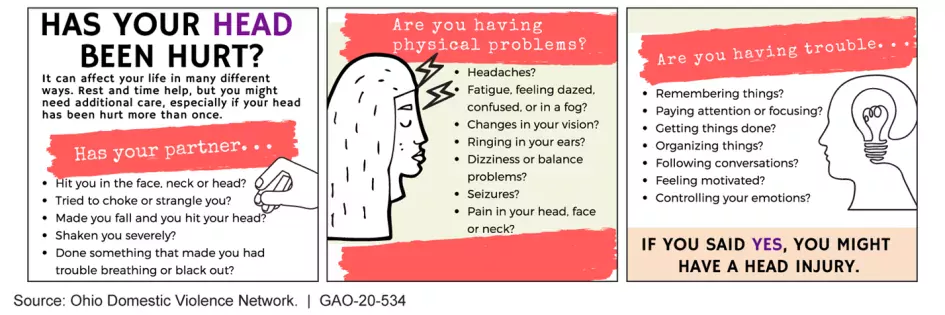Domestic Violence and Brain Injuries: An Unchecked Public Health Problem
One in 3 adults in the United States has been a victim of domestic violence. And this number may be increasing. As millions of Americans quarantine due to the COVID-19 (coronavirus) pandemic, news outlets have reported that such violence could be on the rise.
Domestic violence—or intimate partner violence—includes physical violence, such as slapping, pushing, hitting with a fist or hard object, slamming against something, strangulation, or using a weapon. It can also involve sexual violence, stalking, or psychological aggression.
Physical violence can result in concussions and other brain injuries. Yet, despite the severity of these injuries, they are often under-diagnosed and under-treated. They are also under-researched.
In today’s WatchBlog we look at the connection between brain injuries and domestic violence, and our recent report.
Education, screening, and treatment
To help domestic violence victims, the Department of Health and Human Services (HHS) and the Department of Justice (DOJ) provide grants to state and local organizations, including shelters and police departments.
For example, the Ohio Domestic Violence Network, which was supported in part by a DOJ grant, trained staff at 5 domestic violence shelters on brain injuries, and developed educational materials for shelter staff to share with victims.
An unclear picture
Although domestic violence and brain injuries are significant public health issues, no one knows the actual number of domestic violence victims who have suffered a brain injury.
Enhancing the health and well-being of Americans is critical to HHS’s public health mission. HHS officials acknowledge there is a lack of data on the prevalence of brain injuries resulting from domestic violence, but the department has made only limited efforts to collect this data. In part, this is because brain injuries and domestic violence are treated as separate public health issues. Without that prevalence data, though, there is no way to know the magnitude of this public health problem or how to fully help its victims.
To learn more about our findings, check out our report.
· Comments on GAO’s WatchBlog? Contact blog@gao.gov.
Share this:
GAO Contacts
Related Products

GAO's mission is to provide Congress with fact-based, nonpartisan information that can help improve federal government performance and ensure accountability for the benefit of the American people. GAO launched its WatchBlog in January, 2014, as part of its continuing effort to reach its audiences—Congress and the American people—where they are currently looking for information.
The blog format allows GAO to provide a little more context about its work than it can offer on its other social media platforms. Posts will tie GAO work to current events and the news; show how GAO’s work is affecting agencies or legislation; highlight reports, testimonies, and issue areas where GAO does work; and provide information about GAO itself, among other things.
Please send any feedback on GAO's WatchBlog to blog@gao.gov.





